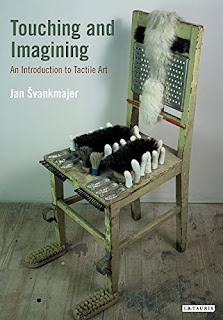Tactilism in Jan Švankmajer’s Art
One of the most important filmmakers to emerge from the surrealist movement, Švankmajer contributed greatly to tactile art with his book (Touching and Imagining), his sculptures, tactile objects, poetry, a compilation of tactile art history, and experiments with the Czech-Slovak Surrealist group during the 70s, despite the censorship by the communist government.
The way he uses darkness, close-ups, and exaggerated sound effects in 'Down to the Cellar' forces us to rely less on our vision to identify the environment and engage other senses. He uses a surrealist tactility, combining irrelevant things, such as coal dough and coal bed, so as to activate the viewer's analogical associations.
(Woman making dough with coal and eggs, Down to the Cellar, 1983)
He uses "gesture sculpture" in many of his films, in which clay is imprinted directly with emotions.
(Dimensions of Dialoque, 1982)
He believes all objects have auras and are charged with emotions through touch, and he uses them in a way that strips away their utility. He creates this absurd reality by twisting everyday objects in such a way that makes us relate yet feel completely unrelated, to force the limits of imagination.





.png)
I read this with great interest and enjoyment and also learned something from it - so, thank you for that. While I was reading it, it occurred to me to recommend to you John Dewey's famous book Art as Experience. I found a good summation of it here:
ReplyDeletehttps://hyperallergic.com/67081/reconsidering-john-deweys-art-as-experience/
I am not sure how easy it would be to find this online as a pdf, but it is a book well worth ordering and reading in its entirety, not just as a summation. You can maybe find it on nadir kitap, they seem to have these types of books.
Another book that might interest you is Art and Agency by Alfred Gell. Here is a summary of that one:
https://www.universiteitleiden.nl/en/research/research-projects/humanities/gells-theory-of-art-as-agency-and-living-presence-response